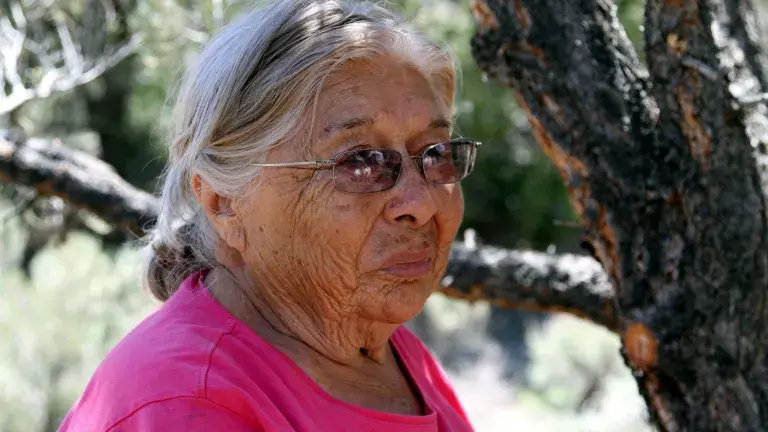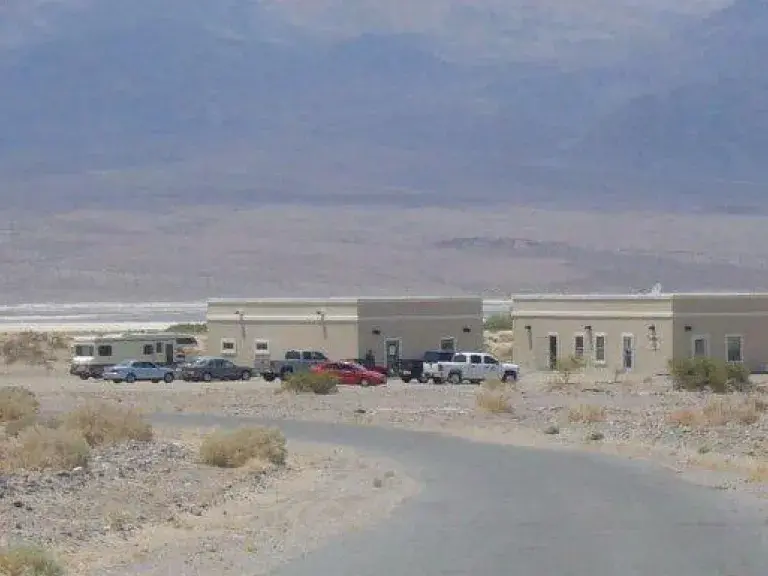Image


The Timbisha Shoshone Tribe, based in Death Valley California, is among those Indian nations enduring an especially long and nasty fight in its dealings with the United States and Bureau of Indian Affairs (BIA) – a 165-year long battle. The latest conflict involves the BIA’s installation of its own so-called government for the Tribe. This takeover of the Timbisha Shoshone Tribe’s government ignores the Tribe’s fundamental right of self-government, the inherent right of the Tribe to decide who is a member of the Tribe and how the Tribe will be governed.
The BIA is again abusing its power over federal funds and Indian programs to take over and replace a federally recognized tribal government. In this case, the BIA is deciding who the members and leadership of the Tribe are and forcing the Tribe to accept the BIA’s decisions.
In 2011, the Department of the Interior, which oversees the BIA, cut off funding and pushed aside the elected Timbisha Shoshone Tribal government. Then Assistant Secretary for Indian Affairs, Larry Echo Hawk, insisted that a new election be held and ordered that dozens of non-members be allowed to vote and run for tribal office in violation of the Tribe’s Constitution adopted in 1986. The non-members did not meet the qualifications for membership in the Tribe as set by the Tribe’s Constitution, and they were not eligible to vote in the Tribe’s elections.
The Assistant Secretary went even further, appointing George Gholson, a non-member, to conduct the new election. Gholson is currently the chairman recognized by the federal government. The BIA resumed funding for the Tribe and its new BIA-created tribal government, providing funding, programs, and services for dozens of people it knew to be ineligible for membership in the Tribe and ineligible to receive programs, benefits, and services intended for members.
In September 2013, the BIA ordered a vote on a proposed new constitution that would make many more non-Timbisha individuals into new tribal members. Administrative appeals to stop the referendum delayed the vote for several months. Under the proposed constitution, a large group of individuals who do not meet the membership requirements (now numbering around 86) would become members of the Tribe. This proposed constitution was created by the Gholson-led council, and it was they who asked the BIA to conduct the “Secretarial election.” Worst of all, the BIA deliberately permitted the non-members to register to vote on the proposed constitution. Of the 101 individuals who were found “eligible” to vote in the referendum, 49 – very nearly half – were non-members. Of these non-members, 47 had been legally taken off the rolls by the Timbisha Enrollment Committee in 2008. The BIA was preparing to let non-members vote themselves into the Tribe. That the vote seeks to change the very constitutional provision that bars these non-members from voting highlights the absurdity of the BIA’s stance.
So far, the rightful Timbisha leaders, Joe Kennedy and the other members of the last legitimately elected Tribal Council, have not been able to get a federal court to even consider whether the BIA is violating federal law. These tribal government leaders sued the Assistant Secretary and other federal officials to put a stop to their takeover of the Timbisha Shoshone Tribe. However, the federal court would not consider the case, because the District Judge said that the federal government could not be sued unless the Timbisha Tribe is also sued, and ruled that the Tribe cannot be sued because of sovereign immunity. That decision is now being appealed to the Ninth Circuit Court of Appeals. Sadly, no decision can be expected in the appeal for at least a year – allowing the BIA and the Department of the Interior to go on with their illegal actions.
The BIA and Interior Department insist that they have the legal authority to decide who is the government of any Indian tribe and that they can require at least this Tribe to accept anyone as a voting member of the Tribe. Further, the BIA and Interior Department in this case claim that they cannot be sued for these actions – that they do not have to comply with federal law and do not have to answer to any court for their actions.
A brief bit of background: the Timbisha Shoshone Tribe won formal recognition of its existence as a tribe from the BIA in 1982. The Tribe adopted its own written Constitution in 1986, which spells out the requirements to be a member of the Tribe. In 2000, the Tribe persuaded Congress to recognize and protect some of its homeland in Death Valley and nearby. Congress recognized and set aside more than 7,000acres as belonging to the Tribe.
According to long-standing federal law, each Indian tribe decides for itself the requirements for membership in the tribe and decides who meets those requirements. Of course, Indian tribes, including the Timbisha Shoshone Tribe, existed and controlled their own membership long before the United States came into being. According to federal law, the BIA has no authority at all to decide who is a member of any tribe. Every legal expert agrees on this point. This is not something that is open to legal argument.
When the Timbisha Shoshone Tribe created its written membership rolls in the 1980s, a number of people sought to be enrolled even though, at the time, they could not prove they met the requirements for membership. These people were placed on the rolls pending the submission of documents showing that they actually met the membership eligibility requirements.
After these people failed to supply sufficient documentation or in the case of 74 people who supplied no proof at all that they were entitled to be members, the Timbisha Enrollment Committee did what it was required to do by the Timbisha Constitution: the Committee took these individuals off the roll of tribal members in 2008, and the Tribal Council confirmed the Committee’s decisions. Simply put, they were not members because they could not meet the long-settled membership requirements of the Timbisha Constitution even after being given written notice and a further opportunity to submit evidence.
Nevertheless, Assistant Secretary for Indian Affairs Larry Echo Hawk insisted that these non-members be permitted to vote and run for office in the Tribe’s elections. The BIA and the Assistant Secretary have refused, despite repeated requests, to provide any reason for forcing these non-members on the Tribe. These non-members and now many more besides continue to be on the Tribe’s rolls in violation of the Tribe’s Constitution because of the BIA’s demands and decisions.
Now the BIA is trying to cover up the obviously illegal business of enabling non-members to take over an Indian nation.
In October 2013, Joe Kennedy and other members of the Timbisha Tribal Council that was pushed aside by Assistant Secretary Echo Hawk in 2011 filed administrative appeals challenging the election plans. The BIA claimed that the decisions to hold the election could not be appealed. Kennedy and the other Timbisha Council members also filed formal protests about the election, especially the BIA’s failure to meet its own time deadlines and the fact that 49 of the 101 registered voters recognized for the BIA election are not members of the Tribe.
The Secretarial election or referendum was called off at the last minute – on October 30th – because of the protests of the authentic Timbisha leaders, the members of the last legitimately elected Tribal Council. The Gholson council, facing a cancellation and rescheduling of the election, withdrew its request for the election just days before the November 4 deadline for submitting ballots. Apparently, the Gholson council immediately requested the BIA to conduct another secretarial election.
Early in 2014, the BIA again ordered a Secretarial election to approve a new constitution, allowing the non-members to vote, just as in the prior election. The Secretarial election did not comply with the requirements of the existing Timbisha Constitution of 1986 for amending the Constitution, and in fact, the BIA treated the existing Constitution as if it were of no validity at all. Ever since the Tribe adopted the Constitution in 1986, it has been recognized and applied by the BIA as the Tribe’s governing law. Since sometime in 2013, however, the BIA has made it clear that it does not regard the 1986 Constitution as being in any way valid or binding. Of course, it is illegal for the BIA to treat any tribe’s Constitution in this way. Joe Kennedy and the Timbisha Tribal Council again filed administrative appeals challenging the illegal BIA actions and the calling of the election.
The Secretarial election was completed on March 29th and the results, not surprisingly favored adoption of the new constitution. The non-members simply voted themselves into the Tribe with the advance approval of the BIA, without any effort to comply with the long-recognized Tribal Constitution. Kennedy and the Council immediately protested the election results through administrative channels. The Assistant Secretary for Indian Affairs, Kevin Washburn, decided the election challenge on May12th, approving what he called “the Tribe’s ratification of a new Constitution.”
In fact, what the BIA did was to remove the Tribe’s duly elected Council in 2011, force the Tribe to accept a large number of non-members to vote and hold office, put the non-members in charge of holding the tribal elections, and openly treat the Tribe’s Constitution as of no effect. By the time of the Secretarial election, there could be little doubt of the outcome – the BIA had already done away with the Tribe’s existing Constitution as a practical matter in its decision making. The Assistant Secretary’s claims, in his decision on the election, to respect the Tribe’s right to control its own membership and to freely adopt its own constitution were completely false.
The Obama Administration, particularly the BIA and Interior Department, claims to respect the right of Indian and Alaska Native tribes to self-government, but the Administration’s handling of this matter betrays this commitment. Taking away a tribe’s inherent right of self-government inflicts terrible damage and eventually destroys Indian tribes and Indian cultures. It tears down their ancient societies, cultures, and traditions. When this happens, Indian tribes such as the Timbisha Shoshone Tribe, are the victims of the federal government in just the same way that many tribes were abused and destroyed generations ago. This more modern victimization is as wrong today as it was then.
See Cherokee Nation v. Georgia, 31 U.S. 1, 12, 32-38 (1831)(recognizing the Cherokee nation as "a distinct political society, separated from others, capable of managing its own affairs and governing itself. . . ”); Plains Commerce Bank v. Long Family Land & Cattle Co., Inc., 554 U.S. 316, __, 128 S. Ct. 2709, 2718 (2008)(recognizing restricted tribal authority over nonmembers on the reservation, but affirming tribes retain power to determine tribal membership and to legislate on the reservation); United States v. Wheeler, 435 U.S. 313, 322 (1978)(tribes "remain 'a separate people, with the power of regulating their internal and social relations,'" including the right to prescribe enforce laws applicable to tribal members); United States v. Mazurie, 419 U.S. 544, 557 (1975)(tribes retain power to govern "their members").